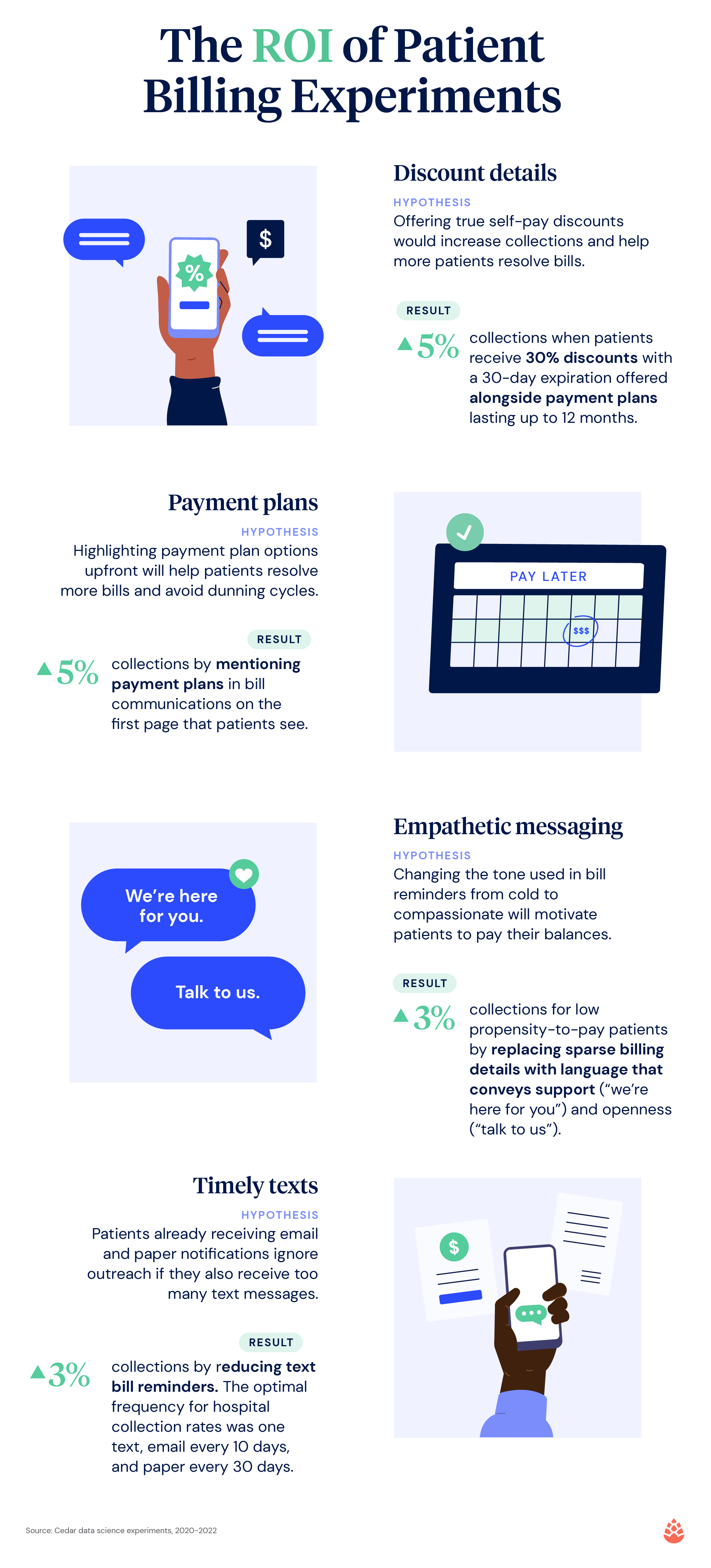A few years ago, Amazon made a small change that had a huge impact on ROI. Once the company moved credit card offers from the homepage to the shopping cart page, annual revenue went up tens of millions of dollars, according to Harvard Business Review.
Amazon has a hidden advantage when making decisions: experimentation. Research teams run A/B tests every day and optimize quickly so the company can see results right away. Google and Netflix operate the same way, but you don’t have to be a tech giant to benefit from data science. Companies with major in-person presences, like FedEx and State Farm, have also invested in digital experiments to boost their bottom line.
In many cases, the most impactful user tests are not sweeping system overhauls but rather minor tweaks that lead to clear results. Think tiny bets instead of moon shots. This iterative approach fits especially well in healthcare, where providers have to manage risk and patients may be wary of wholesale changes that throw off their expectations.
Since Cedar was founded, we’ve relied on experimentation as a way for health systems to consistently improve the patient experience and increase bill resolution rates. Across the patient financial journey, we identify areas of friction and hypothesize ways to improve them. We’ve helped providers optimize digital communications, language, UX and more—all with an emphasis on ROI that gets better over time.
Check out the infographic below to learn about four Cedar billing experiments that boosted engagement for providers while making a positive impact on patients.

What’s the true cost of low patient engagement? Find out how much EHR limitations are costing your health system every year with a custom collections lift report.



